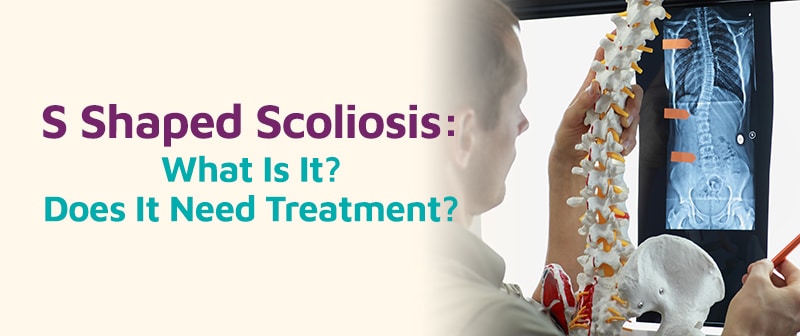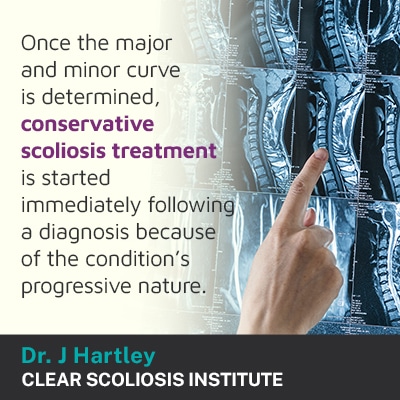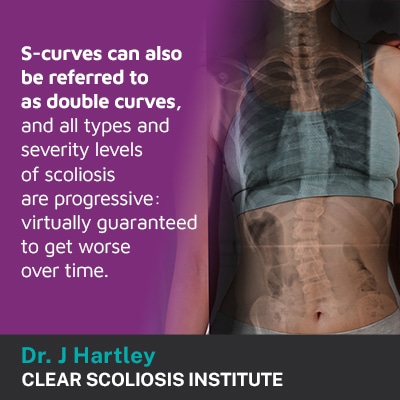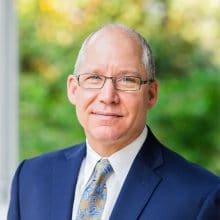
No two cases of scoliosis are the same, which is why treatment plans need to be 100-percent shaped around a patient’s individual condition characteristics. When scoliosis is diagnosed, classifying conditions further based on specific patient and condition variables is part of the process, and different curvature types and locations are important.
As a progressive condition, treatment is needed for all types and severity levels of scoliosis. Scoliosis involves the development of an unhealthy spinal curve that also twists, and an s shaped scoliosis involves the development of two unhealthy spinal curves that bend in opposite directions.
Because there are so many different types and severity levels of scoliosis, classifying conditions is important, so let’s start with the diagnostic/classification process.
Part of the reason it’s so beneficial to seek treatment from a scoliosis specialist is because the condition ranges so widely from one patient to the next.
A diagnosis of scoliosis means an unhealthy sideways-bending curvature of the spine has developed, and to be diagnosed as a true scoliosis, there also has to be rotation, meaning the spine also twists unnaturally.
So what this means for the spine, its surrounding muscles, nerves, and the entire body, is that uneven forces have been introduced, and if the spine loses one or more of its healthy curves, it can’t function the same way as the biomechanics of the entire spine are disrupted.
When the spine’s natural and healthy curves are in place, its vertebrae (bones of the spine) are aligned and stacked on top of one another as they should be, in a neutral/straight alignment, but when an unnatural spinal curve develops, some of those vertebrae become unnaturally tilted, shifting them out of alignment with the rest of the spine.

In addition to the sideways bend and rotational component, the size of the scoliotic curve has to be a minimum of 10 degrees to be diagnosed as scoliosis, and this is determined by a patient’s Cobb angle measurement.
Cobb angle is taken during X-ray to confirm a diagnosis of scoliosis, and to classify conditions based on their severity.
The higher a patient’s Cobb angle, the more unnaturally tilted the vertebrae are at the curve’s apex and the more severe the condition:
Condition severity is a key condition factor that treatment plans are crafted around, and additional classification points include patient age, condition type (determined by causation), and curvature location.
Not only can scoliosis range so widely in severity, there are also multiple types, and curvature location, along with curvature type, is where the shape/pattern of the curve factors in.
There are three main spinal sections, and all can be affected by scoliosis: the cervical spine (neck), thoracic spine (middle/upper back), and the lumbar spine (lower back).
Each spinal section has some special responsibilities related to its location, and in most spinal conditions, the area of the body that surrounds the affected spinal section is going to be affected the most.
The lumbar spine, for example, has the added role of supporting the weight of the spinal sections above, the torso, and feels the strain of bending, twisting, and lifting.
In cases of lumbar scoliosis, it’s the lower body that’s going to feel the majority of the conditions effects; for example, the sciatic nerve starts in the lower back, so lumbar scoliosis can cause the sciatic nerve to become compressed, and sciatic nerve pain can develop as a result.
In typical cases of idiopathic scoliosis with a C-shaped curve, there is a single scoliotic curve that bends to the right, away from the heart (dextroscoliosis), and in some more-complex and atypical cases, the curve can bend towards the heart, to the left (levoscoliosis).
When a curve bends to the left, this is atypical and often involves an underlying pathology, as in neuromuscular scoliosis that’s caused by the presence of a larger more-complex neuromuscular condition, or congenital scoliosis that’s caused by structural abnormalities within the spine that develop in utero.
When there is an S-shaped scoliosis, there are two unnatural spinal curves, bending in opposite directions.
When there are two unnatural scoliotic curves to correct, this makes the treatment process more complex.
When it comes to choosing a treatment approach to commit to, this is the most important decision scoliosis patients are faced with; this is because the way scoliosis is responded to with treatment can shape long-term spinal health.
Treating an S-shaped scoliosis involves first determining which is the major and minor curve, classifying each curve based on its severity and location, and the larger curve is going to be the focus of treatment.

As a progressive condition, being proactive with treatment can be highly beneficial; as scoliosis progression occurs, spinal rigidity increases, and in addition to causing pain (in adults) and a decreased range of motion, it can make the spine less responsive to treatment.
With scoliosis that’s already progressed significantly, spinal rigidity can also make it difficult for some patients to perform certain scoliosis-specific exercises (SSEs) that are an important part of treatment.
The spine’s surrounding muscles are also affected by the development of an S-shaped scoliosis, even more so than in a typical C-shaped scoliosis; the muscles surrounding a scoliotic curve can become unbalanced because they are being pulled in different directions, and an S-shaped scoliosis has two unnatural spinal curves pulling the muscles in opposite directions.
Once the major and minor curve is determined, conservative scoliosis treatment is started immediately following a diagnosis because of the condition’s progressive nature.
While a treatment outcome can never be guaranteed, the earlier in the condition’s progressive line treatment is started, the better; only proactive treatment has the potential to counteract the condition’s nature.
Modern conservative scoliosis treatment is chiropractic-centered and uses a variety of chiropractic techniques and manual adjustments to reposition the most-tilted vertebrae so the spine can be realigned, and this is how I impact the spine on a structural level.
A variety of therapies including physical therapy and scoliosis-specific exercises are also applied in an effort to increase spinal support/stabilization by strengthening the spine’s surrounding muscles.
Physical therapy and SSEs can also help improve posture, work towards correcting any muscle imbalance, and are known to activate specific areas of the brain for better communication.
Corrective bracing is another facet of scoliosis treatment that I use mainly on young patients whose spines are still growing; this helps by pushing the spine into a straighter alignment.
Rehabilitation can involve custom-prescribed home exercises so patients can continue to heal and stabilize their spines from home, along with continued chiropractic care and guidance on how to lead a scoliosis-friendly lifestyle.
Scoliosis is diagnosed when the spine has developed an unhealthy spinal curve that also rotates and has a Cobb angle of at least 10 degrees.
Scoliosis can develop in any one section of the spine as a single C-shaped scoliotic curve, or in more than one section as an S-shaped scoliosis with two unnatural spinal curves that bend in opposite directions.
The most common type of scoliosis is idiopathic scoliosis, and it affects adolescents between the ages of 10 and 18, and this age group can progress quickly because growth is the condition’s main trigger for progression, and adolescence is associated with unpredictable and rapid growth spurts.
An S-shaped scoliosis is more complex to treat, not only because there are two scoliotic curves, but also because as the two curves bend in opposite directions, one curve will be bending to the left, towards the heart, which is atypical.
As a particularly complex curvature type to correct, an S-shaped scoliosis requires treatment, as all types and severity levels of scoliosis do.
Here at the CLEAR Scoliosis Institute, proactive treatment is applied in an effort to prevent progression and increasing spinal rigidity that only makes the condition more severe and complex to treat.
The most important thing for patients to understand is that all types of scoliosis require treatment because even if they don’t progress quickly due to growth, as a progressive condition, they are likely to get worse at some point.

CLEAR provides a unique and innovative way of understanding scoliosis. Sign up to receive facts and information you won’t find anywhere else.
